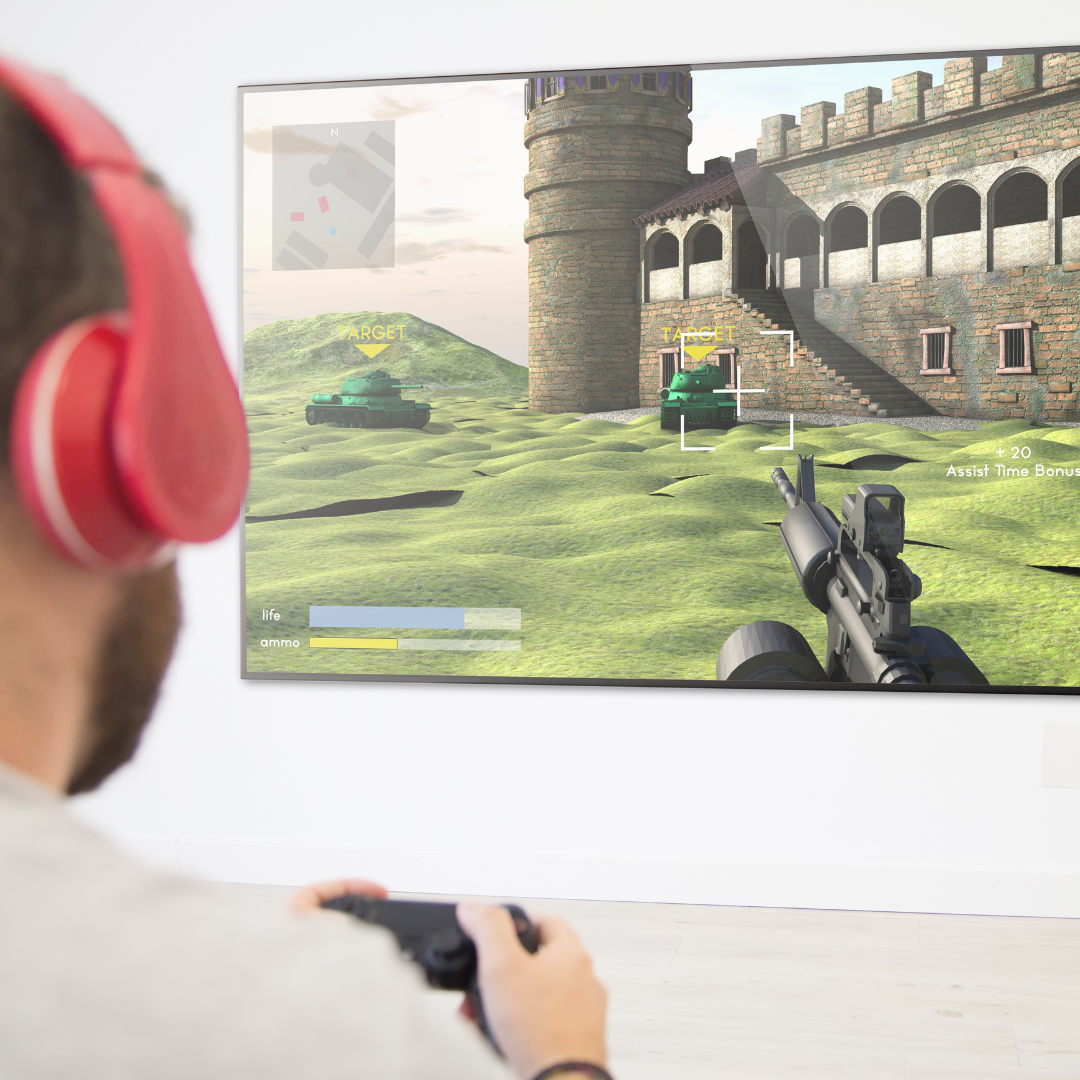Arcade games have long been a staple of entertainment, drawing in players of all ages with their vibrant visuals and engaging gameplay. These games not only provide a nostalgic experience for those who grew up in the golden age of arcades but also offer a unique social atmosphere that fosters interaction among gamers. Playing arcade games can enhance hand-eye coordination, improve problem-solving skills, and provide a thrilling escape from daily routines.
The revival of arcade culture in recent years has brought a new generation into the fold. With modern takes on classic games and the rise of competitive gaming, arcades serve as hubs for communities to connect and share their passion. The physical presence of arcade machines creates a shared experience that online gaming often lacks.
As individuals seek out fun and engaging forms of entertainment, arcade games stand out for their ability to blend skill, strategy, and social interaction. Embracing this form of gameplay can not only entertain but also contribute to a deeper appreciation of gaming as a cultural phenomenon.
The Rise of Arcade Games
Arcade games experienced significant growth from the 1970s to the early 1980s, capturing public interest and shaping gaming culture. This section examines key historical moments, iconic games, and technological advancements that defined the arcade era.
Historical Impact
The 1970s marked the inception of arcade gaming with the release of “Pong” in 1972. It was one of the first commercially successful arcade games, introducing the general public to interactive entertainment. The late 1970s saw a surge in arcade machines, with titles like “Space Invaders” paving the way for the future of video gaming.
The early 1980s is often referred to as the “Golden Age” of arcade games. During this period, the popularity of arcades grew, prompting the opening of numerous venues dedicated solely to gaming. This era was pivotal in establishing video games as a mainstream form of entertainment.
Iconic Games of the Era
Classic games like “Pac-Man,” “Donkey Kong,” and “Galaga” emerged during the arcade boom. “Pac-Man,” released in 1980, became a cultural phenomenon, appealing to a wide demographic and featuring a unique maze-chase format. Its design and engaging gameplay contributed to arcade popularity.
“Donkey Kong,” launched in 1981, introduced players to Mario, a character who would become iconic in the gaming industry. It set a precedent for storytelling in video games, enhancing player engagement through a narrative-driven approach. “Galaga,” released in 1981, improved upon its predecessor with advanced graphics and gameplay mechanics. These games solidified the arcade experience and drew players into gaming communities.
Evolution of Technology
Technological advancements during the 1970s and 1980s significantly influenced arcade games. Early machines relied on simple graphics and sound, but by the early 80s, innovations such as colour displays and improved sound systems became standard. The introduction of microprocessor technology allowed developers to create more complex games with engaging graphics.
Additionally, games like “Tron,” based on the 1982 film, showcased the potential for multimedia integration in gaming. These developments not only improved the quality of arcade games but also expanded the possibilities for future gaming experiences. The evolution of technology laid the groundwork for home console gaming, eventually transforming how players interacted with games.
Cultural and Social Influence
Arcade games have significantly shaped cultural and social landscapes, influencing everything from popular culture to community dynamics. Their impact resonates in various forms, from iconic games to the formation of gaming communities.
Arcades and Popular Culture
Arcades became synonymous with entertainment in the 1980s, introducing characters like Mario from Nintendo and Pac-Man from Namco that have remained cultural icons. These games not only entertained but also influenced music, fashion, and film.
Games like Street Fighter popularised fighting games, leading to tournaments and merchandise that blurred the line between gaming and mainstream culture. Titles from Atari and Sega further embedded gaming into the public consciousness, creating memories that evoke nostalgia in those who experienced the rise of arcades.
Gaming Communities and Competition
Arcades functioned as social hubs where players gathered to compete and collaborate. This community aspect fostered friendships and healthy competition, often leading to the development of skills in various games.
Games like Dance Dance Revolution encouraged not only competition but also social interaction through group play. Tournaments became common, bringing gamers together and fostering a sense of belonging. This environment laid the groundwork for online gaming communities that exist today.
From Arcades to Home Consoles
The transition from arcades to home consoles marked a pivotal shift in gaming culture. While arcades provided a communal experience, home consoles allowed for individual play, significantly changing how people interacted with games.
Consoles like the Nintendo Entertainment System (NES) and Sega Genesis brought iconic arcade games into living rooms. This shift helped maintain the nostalgia surrounding arcade titles while making them accessible to a broader audience. The evolution of home gaming solidified its cultural presence, ensuring that the legacy of arcade gaming endures in modern society.
Game Design and Creativity
Arcade games showcase unique elements of game design and creativity. They blend technology, sound, and visuals to create compelling player experiences that refine skills and enhance enjoyment.
Advancements in Arcade Technology
Recent innovations in arcade technology have transformed how games are conceived and experienced. Modern arcade cabinets often utilise high-definition displays and advanced graphics engines, making gameplay visually stunning.
Touch screens and motion sensors introduce new interactivity, allowing players to engage in unique ways. These advancements foster creativity in game design by permitting developers to explore complex mechanics and narrative-driven content.
Moreover, the emergence of online connectivity lets players compete globally, pushing game developers to craft more intricate and engaging experiences.
Gameplay and Skill Development
Arcade games are crafted with a balance of challenge and reward, fostering hand-eye coordination and strategic thinking. Players often face progressively difficult levels that encourage skill refinement and mastery.
The instant feedback mechanism in these games allows players to learn from mistakes and adjust their approaches quickly. This ongoing cycle of improvement stimulates creativity and problem-solving skills.
As players become more proficient, the design challenges them to attempt higher scores or complete games faster. This blend of competition and enjoyment cultivates a strong sense of community around arcade gaming.
The Art of Sound and Visuals
Sound and visuals are integral to the atmosphere of arcade games. High-quality audio effects and catchy music contribute significantly to player immersion.
Developers use a combination of soundscapes and visual animations to create an engaging environment that draws players in. The aesthetics of arcade cabinets, from their artwork to their lighting, play a crucial role in attracting players.
Visual narratives conveyed through animations enhance gameplay mechanics, making every action visually rewarding. Together, these elements create a memorable experience that celebrates creativity and design in arcade games.
Modern-Day Arcades and Legacy
The landscape of modern-day arcades has evolved significantly, blending nostalgia with technological advancements. The enduring appeal of arcade games continues to bring communities together while embracing innovations, ensuring their relevance in today’s entertainment culture.
The Rebirth of Arcade Culture
In recent years, there has been a noticeable resurgence in arcade gaming. Many younger players are discovering the charm of classic arcade games, alongside new offerings. This movement is characterised by the opening of retro-themed arcade bars and family-friendly entertainment centers.
These venues often combine old-school cabinets with modern aesthetics. They provide a social atmosphere where players can enjoy games while sharing experiences with friends. The appeal lies in the addictiveness of the games, drawing crowds seeking both nostalgia and new challenges.
Integration with New Technologies
Modern arcades are now integrating advanced technologies to enhance gameplay. Virtual reality experiences are becoming a staple, allowing players to immerse themselves in interactive environments. This shift is accompanied by 3D graphics that elevate visual experiences beyond traditional flat screens.
Some arcades feature cutting-edge innovations like motion-sensing technology and augmented reality. These elements provide unique gameplay mechanics and immersive storytelling. The combination of classic arcade elements with new technology creates a hybrid model that attracts diverse audiences.
Preserving the Allure of Arcade Games
Despite advancements, the essence of arcade gaming remains vital. Many modern arcades focus on preserving the legacy of classic games that defined earlier decades. Iconic titles create a sense of community and shared history, drawing in both seasoned players and newcomers.
Moreover, some venues host tournaments and special events, fostering a competitive spirit. These gatherings encourage social interaction and strengthen community ties. The nostalgia associated with these games blends with modern PVP experiences, ensuring that the allure of arcade gaming remains timeless and relevant.




